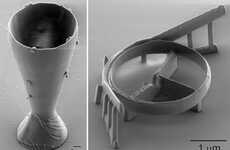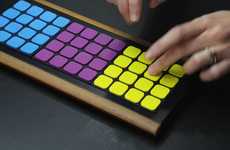
College Student Sean Riley 3D Printed a Functioning Six String Violin
Alyson Wyers — February 1, 2018 — Pop Culture
References: news.utexas.edu & digitaltrends
3D printing has proved to be an affordable design alternative in a wide range of applications, from health care to construction, and now a music arts student has used the technology to create his own six string violin.
Typically violins have four strings, but University of Texas doctoral candidate Sean Riley needed an electric one with six for his studies. He made his own in order to play a new piece called 'The Dharma at Big Sur' by John Adams. He 3D printed the six string violin using university resources -- specifically makerspace The Foundry at the college's Fine Arts Library. Riley sought aid from fellow students Daniel Goodwin and Rebecca Milton.
Photo credit goes to the University of Texas at Austin.
Typically violins have four strings, but University of Texas doctoral candidate Sean Riley needed an electric one with six for his studies. He made his own in order to play a new piece called 'The Dharma at Big Sur' by John Adams. He 3D printed the six string violin using university resources -- specifically makerspace The Foundry at the college's Fine Arts Library. Riley sought aid from fellow students Daniel Goodwin and Rebecca Milton.
Photo credit goes to the University of Texas at Austin.
Trend Themes
1. 3D Printed Instruments - The trend in using 3D printing to create functioning musical instruments is disrupting the traditional instrument manufacturing industry by providing more affordable options and allowing for unique custom designs.
2. Makerspaces - The trend in makerspaces like The Foundry at the University of Texas is disrupting traditional arts and crafts by offering the use of 3D printers and other equipment to create unique designs.
3. Multi-string Instruments - The trend in creating multi-string instruments using 3D printing technology is disrupting traditional instrument design and performance, allowing for more versatility and unique sound capabilities.
Industry Implications
1. Musical Instrument Manufacturing - The use of 3D printing technology in manufacturing musical instruments is disrupting the traditional process and providing more affordable options for musicians.
2. Education - The trend in universities and makerspaces offering access to 3D printing technology is disrupting traditional education and providing students with hands-on, innovative experiences.
3. Arts and Crafts - The use of makerspaces and 3D printing technology is disrupting traditional arts and crafts by allowing for more unique and customized designs.
4.3
Score
Popularity
Activity
Freshness























